By Jon Latimer
With the defeat of the German Seventh Army and the closing of the Falaise Gap in the summer of 1944, the Allies pursued the retreating enemy across France. During the advance, their supply lines were stretched to the breaking point. The distance from the beaches and the only open port of any size, Cherbourg, meant that the diverging directions of the Allied advance could not be sustained equally. These logistical concerns heated up a debate over strategy. A single thrust into the heart of the Ruhr was strongly supported by the British, led by Field Marshal Bernard Law Montgomery. The Supreme Commander, General Dwight D. Eisenhower, favored a broader front. As Lt. Gen. George S. Patton’s Third Army charged east toward the Meuse and Moselle Rivers, Eisenhower assured Monty that despite the broad-front strategy he was adopting, the need to open up ports on the Channel coast would dictate that the British-led forces receive priority supplies. Patton and his superior, Lt. Gen. Omar N. Bradley, protested strongly because this approach would halt to their own headlong advance.
“My men,” declared Patton, “can eat their belts, but my tanks have gotta have gas.” Bradley also wanted to turn the First Army eastward, and the combined pressure eventually produced a compromise. “We finally persuaded General Eisenhower to let V Corps of the First Army and the Third Army go on and attack the Siegfried Line as soon as the Calais area was stabilized,” said Patton, who later reported that he obtained “permission to seize crossings over the Moselle … whenever I could get the fuel to move.”
What Patton did not reveal was that one of his corps had just captured 110,000 gallons of the precious fluid, enough to take it to the Moselle. Unfortunately for the Allies as a whole, this concession was untimely. The Germans, who had regarded Patton as the greater threat, had already been discovered concentrating forces to check him on the Moselle. Now, he had sufficient resources engage in battle, but the fuel supply remained insufficient for his tanks to cut through quickly or win an encounter.
On September 3, 1944, Hitler ordered Field Marshal Walther Model to concentrate powerful forces on the Upper Moselle with the aim of producing a counterattack into the flank of the Americans. This was never a realistic option, rendered still less so by the rapid advance of the British and Canadians to Brussels and Antwerp. The enormous gap that now opened up between the German Fifteenth Army along the coast and the Seventh Army in full flight ahead of the Americans after the closing of the Falaise Gap presented the Reich with a crisis. Committing reserves appeared to be the only way to maintain an adequate defense. While the barrel was scraped for every available man—convalescents formed invalid battalions, training establishments were scoured, and garrisons were stripped—Luftwaffe chief Hermann Göring blithely announced that he had six parachute regiments.
These regiments were combined with Luftwaffe ground staff and troops and were formed into the First Parachute Army, which was brought into the line in the Netherlands. Germany, however, not only had a crisis of manpower, but of equipment as well. Although all 88mm antitank guns, Tiger II heavy tanks, and Jagdpanther tank destroyers were directed to the west, the mobile Panther medium tanks and most of the heavy self-propelled assault guns went east, leaving the German commander-in-chief, Field Marshal Gerd von Rund- stedt, without an armored reserve powerful enough to counter another Allied breakthrough. He had to prevent the battle from becoming fluid again. The best chance of achieving this lay in holding off the most immediate threat at the Meuse long enough to man the fixed defenses of the Siegfried Line on the German frontier.
As the Germans faced disaster, so the argument over the strategy of the Allied advance continued. Eisenhower persisted with his idea of a broad front with emphasis in the north. Bradley took this as the opportunity to allow Patton to continue advancing and allocated him half the available supplies so that he could “cross the Moselle and force the Siegfried Line.”
What Patton did not appreciate was the change in the ground he was covering. Having swept across open farmland, he was now approaching the traditional battleground between France and Germany, Alsace-Lorraine. Three major rivers and innumerable tributaries carved the landscape into wooded, hilly tracts, difficult enough for infantry and totally unsuited for armored operations. Since Roman times, this had been the natural route for armies to take in both directions. Fortifications had been built and improved upon throughout the centuries.
While some had assumed that the tank and the airplane had rendered static fortifications obsolete, it became apparent that the advancing Americans would be forced to contend with the region’s fixed German defenses. The French had begun refortifying strongpoints in the area in the 1860s, and the work was continued by the Germans after their victory in the Franco-Prussian War. As artillery improved, so did the works throughout the period before World War I.
These fortifications bore no relation to the medieval idea of a lump of stone dominating the landscape. They aimed at concealing, armored artillery batteries, infantry shelters, and pillboxes, all often connected by tunnels and trenches to subterranean hospitals, mess halls, power stations, and every necessity of command and control.
Many fortifications were surrounded by thick barbed wire, unscalable fences, and deep minefields. They were also designed so that losing a foothold in one corner would not reduce the complex’s effectiveness. Eight of these fortifications were built around the city of Metz and more around Thionville. All were positioned to block any advance from the Moselle. They were garrisoned by troops gleaned from officer and noncom training establishments, battle-hardened from the Eastern Front. Meanwhile, Allied headquarters, surprised as it was by the speed of the advance, was unable to supply anything other than Michelin tourist maps at a scale of 1:100,000. While they showed the main roads, they were useless for close analysis of terrain or for meaningful planning.
Because they would be facing somewhat unconventional defenses, the advancing Americans eventually resorted to a seldom-used technique to deal with the strongpoints: generating a large forward smoke screen.
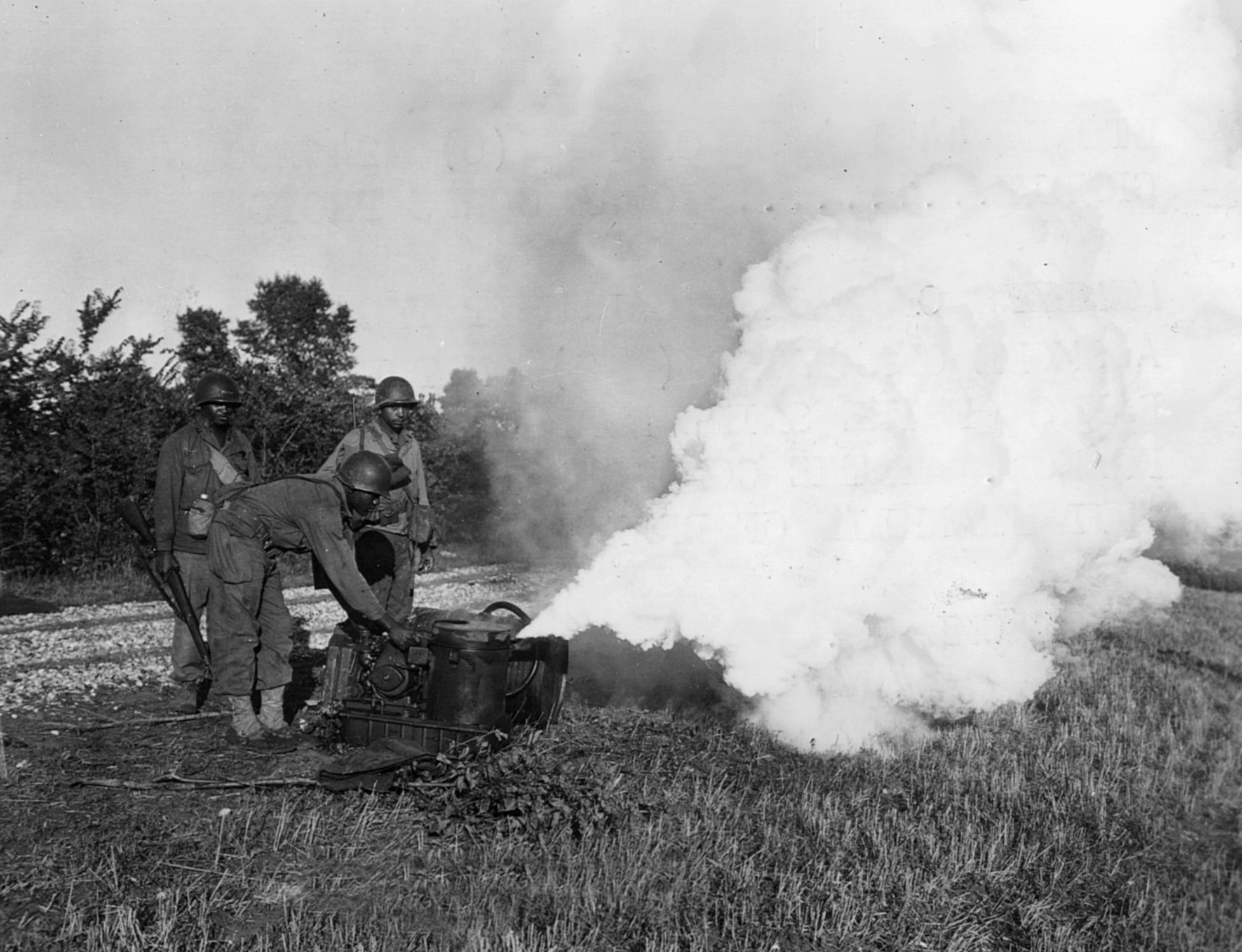
Smoke had been used successfully in the North African and Italian campaigns, but never before in northwest Europe. Twelve smoke generator companies were assigned to the European Theater of Operations, but only four were available for forward operations and only two of these were actually operational. The remainder were stuck in rear areas on transport, security, and other duties. They had all been trained for rear-area antiaircraft support duties and they had never operated under continuous and heavy fire.
As Dawn Broke on September 8, the Old Forts Burst into Life, Pouring Fire into the Crowded Units Across the River.
The unit chosen to undertake this hazardous mission was the 84th Smoke Generator Company attached to the 5th Division and under the operational control of the 1103rd Engineer Combat Group. These formations had no experience working with smoke.
On September 6, Patton resumed the advance, deploying a strong reconnaissance force with the aim of forcing the Moselle at Metz. This was preceded by a light cavalry screen that, after encountering serious opposition, was forced to retire by elements of the 17th SS Panzer Division, which was retreating in front of them. By September 8, however, the Meuse was crossed and the Americans were almost into Bastogne, having already taken Liége.
Model reported to von Rundstedt that “there is only a very thin and inadequate defense line … the enemy enjoys almost complete freedom of movement as far as the West Wall [Siegfried Line], which is held—to the rear of Seventh Army—by only seven or eight battalions on a front of 120 kilometers.” Unless Seventh Army were substantially reinforced, a strategic breach would be opened on the German frontier. When the Americans reached the Moselle, they found that all the bridges had been blown. After four or five fordable crossing sites were reported, the reconnaissance force headed toward these.
The Moselle runs lies in a deep valley, and the roads down to it run through ravines. All of these were covered by German troops. It was difficult enough to get the first American troops down to the water’s edge. Then came a delay while engineers and bridging equipment were brought forward. When the 5th Infantry Division was ordered to Dornot to make a crossing, the troops found the 7th Armored Division already in place and creating an appalling traffic jam. As the units piled up behind each other, rain and sleet added to their misery.
Facing the Americans across the river were two forts, Sommy and St. Blaise. Like most older forts noted on the Michelin maps, they were marked inaccurately and usually discounted by the advancing troops as ancient monuments. As dawn broke on September 8, they burst into life, pouring fire into the crowded units across the river.
By afternoon, a force from the 11th Infantry Regiment managed a crossing in assault boats, and two companies set out to capture Fort St. Blaise. They advanced up a hill and through a wooded area without opposition until they found themselves suddenly outside the fort. One company commander was shot by a sniper, driving the rest of the soldiers to ground. Ahead of them were five rows of barbed wire, a 13-foot steel fence, and a dry ditch approximately 50 feet wide and 16 feet deep. A prisoner they had taken on the way added to their woes by describing the garrison as 1,500 SS men.
The battalion operations officer decided this was too much for two companies to deal with and pulled them back to allow artillery support to assist. The fire unfortunately fell short and caused a number of friendly casualties. The fort responded in kind, and a German counterattack forced the remainder back into their bridgehead. A request by the division to pull them back over the river was denied.
Meanwhile, the 2nd Infantry Division, advancing north of Dornot, had also run into a string of forts. Artillery was unable to effectively engage many of these positions because they were on reverse slopes. By the evening of September 9, the commander of the 2nd Infantry Regiment, reporting casualties of 14 officers and 332 men, protested bitterly against sending infantry against “twenty odd forts.” He suggested an air attack, which was carried out the following day by three sorties of P-47 Thunderbolt fighter bombers armed with 500- pound armor-piercing bombs. Little damage resulted, and the following infantry attack fared no better than its predecessors.
The chosen crossing site was at Arnaville in the narrow valley bottom of the Moselle. Through this gap runs a canal, a river, and a railroad in a belt approximately 400 to 500 yards wide on the western side with a flat strip of land on the eastern shore about 1,000 yards wide, beyond which lay the high ground occupied by the Germans. A small stream, the Rupt de Mad, flows beneath the railroad and canal joining the Moselle. Roads running north and south of the river marked the boundary between the flat land and the rising hills. On a clear autumn day, the visibility was five or six miles to the south in the direction of Metz and three or four miles upstream toward Arnaville and including the proposed crossing sites.
One of the keys to success in such operations is the speedy reinforcement of the bridgeheads, and this in turn depends on bridges. However, the Germans maintained excellent positions including casemated artillery in Fort Driant overlooking the west bank, and they could call on further artillery support.
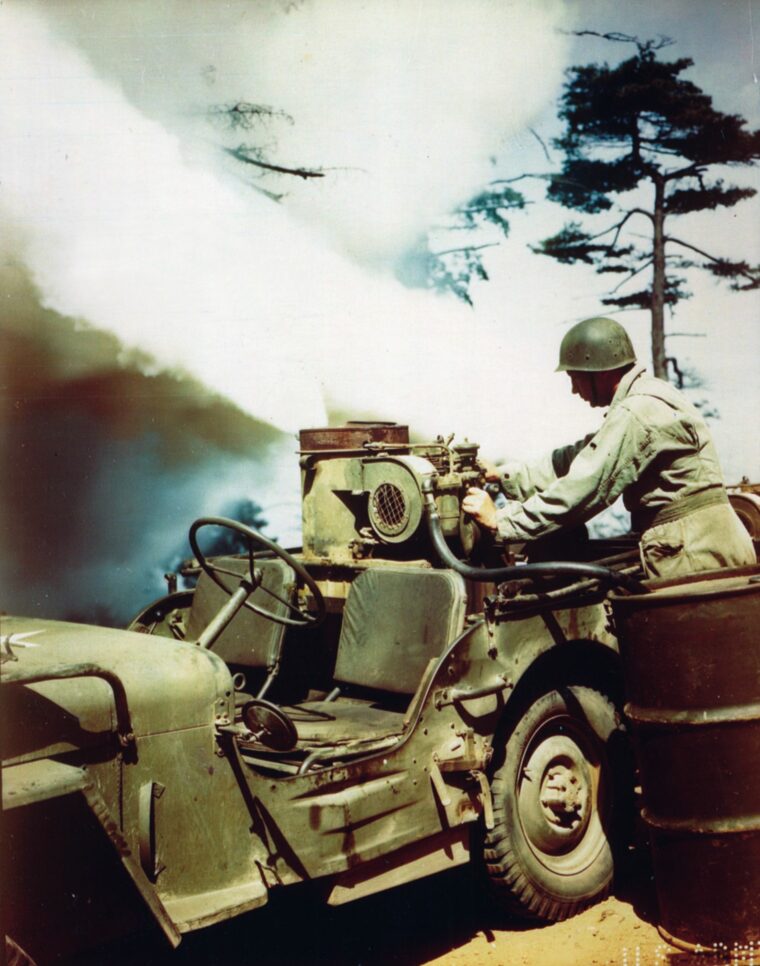
U.S. Forces Neglected to Account for Changing Winds; A Serious and Costly Mistake
The American forces decided that a smokescreen might provide the best protection for combat engineers and infantry at the bridgehead. Some of the excellent meteorological assets available to the U.S. forces were utilized in a careful study of the area by 5th Division’s chemical officer with artillery and air force assistance. This assessment, coupled with interviews of local residents, confirmed a prevailing wind direction as westerly with generally low velocity. Consequently, the chemical officer and the commander of the 84th Company decided to deploy the smoke generators on a line behind Hill 303 some 2,300 yards west of the crossing site. Thus, the prevailing winds would carry the smoke over the crossing site, covering the troops involved in the bridging operation and the flat land to the immediate east of the position. The wind was not expected to change direction, so no effort was made to place generators close to the site itself. This would prove to be a serious and costly mistake.
A secondary reason for placing the generators so far from the crossing site was concern about the behavior of the Smoke Company troops under fire. It was believed that the hill would provide them with cover from artillery and small arms fire and help to steady them as they prepared their equipment. To further enhance this protection, observation posts were to be established on Hills 303 and 331. Radio communications would link these posts with the 5th Division’s chemical officer, who would be deployed at the crossing site. In the meantime, tactical control of the smoke operations was the responsibility of the engineers.
Smoke generator units, first organized shortly after the attack on Pearl Harbor, were initially deployed to protect the Panama Canal, the locks at Sault Ste.-Marie, Michigan, and aircraft plants along the West Coast. The first generator developed was the M-1 or ESSO model. Its principal drawback was its size. It weighed 3,000 pounds and consumed 100 gallons of fog oil every hour. Fog oil was a petroleum distillate that produced an exceptionally long-lasting smoke similar to natural fog. It could easily hold its form for up to five miles downwind of the generation point and would obscure a target day or night.
The 84th was equipped with some of these models, but their main equipment was the new mobile M-2 mechanical smoke generator. This weighed just 172 pounds and drew its fog oil from an external source, usually a 53-gallon drum. The drum would supply it for an hour, and it could generate its first smoke in about a minute as opposed to the three to five necessary for the M-1.
During the night of September 9, the company moved into position. The required fog oil was held at the Third Army supply depot in Troyes, some 180 miles to the rear. Because the 84th did not possess sufficient transport to bring up the large quantities needed, the 5th Division’s quartermaster trucks had to haul the fog oil up to the company supply area some four miles to the rear of the position; the drums were then brought forward by the company’s own trucks. A total of 48 generators were available for the operation; 12 were in position, and spewing smoke on schedule at 0600 on September 10.
The assault troops consisted of the 1st and 2nd Battalions of the 10th Infantry Regiment, which advanced easily under the cover provided by the smoke and succeeded in crossing the river to begin their advance on the far side. The engineers, meanwhile, had not yet brought forward their bridging equipment. At around 1000, the wind shifted to the north-northeast, exposing the site to the full fury of the defenses.
In an effort to reestablish the screen, four generators were now moved to another site closer to the river near to an abandoned railroad embankment, and smoke cover was produced again by noon. However, operations were becoming confused, and the generators were running short of oil. When the assistant division commander and the division chemical officer searched for the company commander, he could not be found, and the executive officer was doing a recon of possible positions on the far bank.
Meanwhile, the company had deserted its first position and abandoned its oil and equipment. The first sergeant was located and was able to organize the movement of oil, generators, and spares to the new position. When the company commander appeared in the late afternoon, he was duly relieved. That night, the Dornot bridgehead upstream was finally withdrawn, the troops having suffered 200 casualties and with only two officers still fit for duty.
To maintain the screen regardless of the wind direction, positions were set up in a variety of locations. A third position, parallel to the Arnaville-Noveant road, was augmented by a jeep-mounted generator that moved back and forth along the road to fill any gaps. Eight generators were taken across the river during the night to a fourth location to be ready for operations by the following day. Further emergency positions were located south of Arnaville, but these were not needed.
On the morning of September 11, the generator crews in the third position began to produce an effective smokescreen so that crossing activities proceeded without interference from the enemy. The engineers had finally brought bridging equipment forward and were ready to begin construction. At around 0900, an engineer officer, noting the lack of effective enemy fire, ordered the smoke generators to be switched off because the smoke slowed the bridge builders down.
When the Germans found the target revealed, they plastered it with every available weapon and succeeded in destroying some of the heavy equipment and disrupting the efforts of the engineers. Smoke cover was reestablished as quickly as possible, and the bridging site was now moved some 300 yards downstream to account for the enemy’s probable pinpointing of the original position.
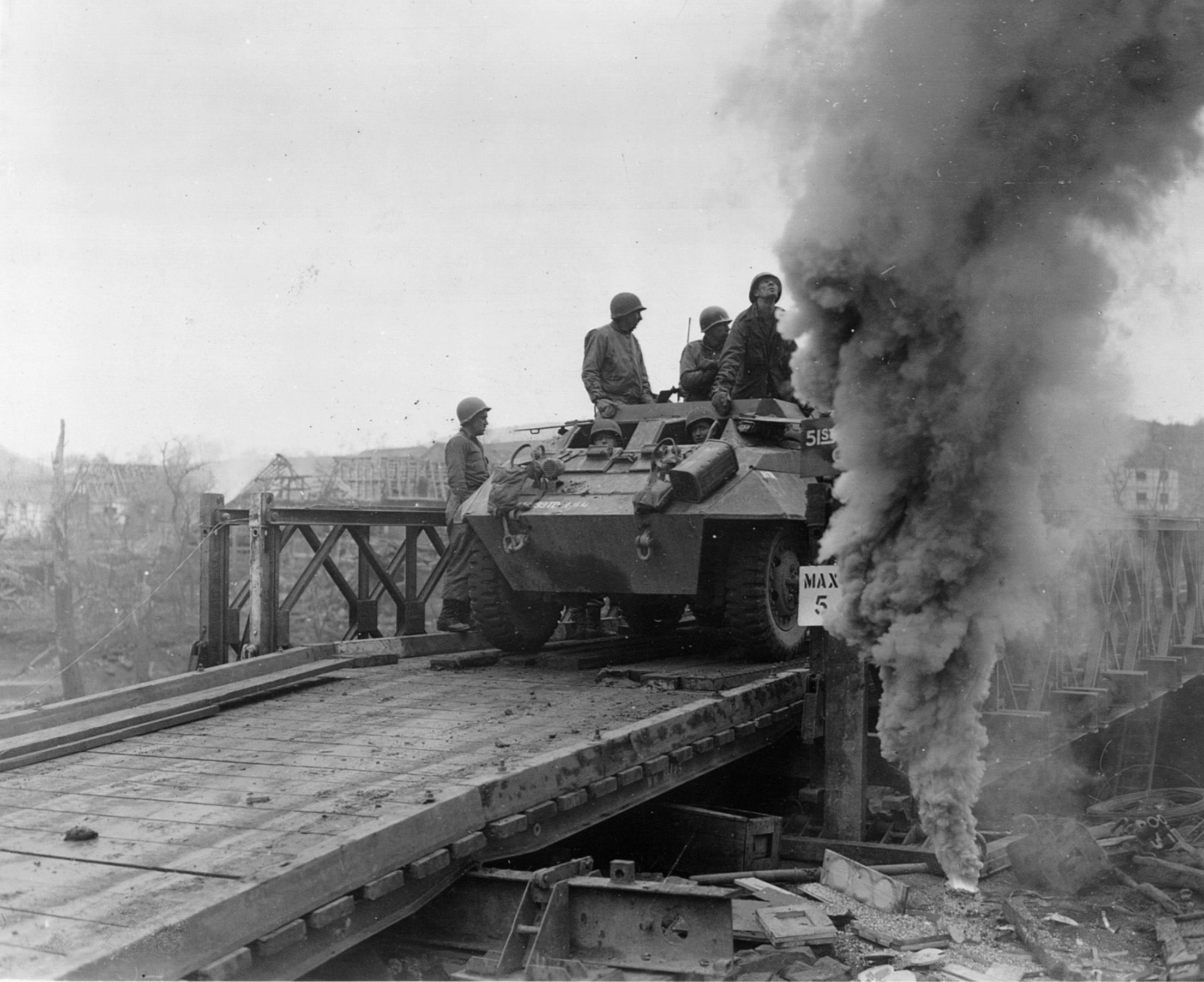
Casualties: 725 in the 10th Infantry, 13 Killed and 100 Wounded in the 1103rd Engineer Combat Group, and 2 Killed and 7 Wounded in the 84th.
In the face of fierce German opposition, it became clear that it would require a major effort to force the river line. Further plans to make the major offensive effort in the north prompted Bradley to warn Patton on September 12 that he might have to “hold the west bank of the Moselle defensively.” Patton therefore proposed to get so heavily involved on the far side that Eisenhower would be unable to call a halt. Bradley gave him until the night of the 14th to do this.
Meanwhile, control of the smoke operations was removed from the engineers and placed in the hands of the division chemical officer, who answered directly to the commander. This resulted in a fierce debate as to the relative merits of the smokescreen. The engineer commander argued that too much reliance had been placed upon it and that it greatly interfered with his men’s ability to carry out their task. The divisional commander decided that it would remain and cited the damage caused by the Germans on the bridging equipment on September 11 as evidence of its necessity. A balance clearly had to be struck between Patton’s urgency and the tactical benefits provided by the smoke.
The engineers completed their task late on September 14, and the dominating heights were captured on the following afternoon. The same day, as Eisenhower reaffirmed his intention to advance on a broad front, he assigned a high priority to support the Anglo-Canadian forces on the left until the Rhine bridgeheads were won. Significantly, however, this support could not be provided until crossings over the Moselle had been secured. This compromise was fine with Patton who wrote, “By the evening of the fourteenth, I had made good my promise to Bradley and had secured in both his opinion and mine, a good bridgehead across the Moselle.”
With the bridgehead secured, the requirement for smoke did not end. The Germans retained dominating positions at Fort Driant and close to Metz. The 161st Smoke Generating Company relieved the 84th on September 21 and continued producing smoke to cover the bridge site for another four days. With the decision by XX Corps to cease smoke operations, the Germans promptly destroyed the treadway bridge and a pontoon structure was also damaged, stopping all traffic. The 84th was rapidly recalled to reestablish the smokescreen. Utterly inexperienced troops at the start, they had rapidly developed into the foremost exponents of the art of making smoke and had contributed greatly to the success of Patton’s advance.
Unfortunately, this left Eisenhower in an extremely weak position. With only 54 divisions of all types to hold a front of 600 miles, he did not have the strength to concentrate anywhere, and the Germans were able to affect an amazing recovery as the autumn progressed. They held up the Allies further before the final defenses of the West Wall and the Rhine were breached. However, a valuable technique had been added to those of the offensive. The 84th Smoke Generator Company had proved that smoke could be used effectively in an assault and, in particular, a bridging operation. Still, lessons would need to be drawn from the experience. The casualties in the operation included 725 in the 10th Infantry, 13 killed and 100 wounded in the 1103rd Engineer Combat Group, and two killed and seven wounded in the 84th.
The operation had been plagued from the beginning by logistical problems. As commanders from all levels downward were learning, logistics is the art of the possible and the lack of transport organic to the 84th could only be overcome by temporarily putting them at the top of the divisional priority list. However, problems with moving men, equipment, fuel, and supplies continued. Essential to the operational effectiveness of their task was the placement of the generators close to the objectives. This did not occur initially, nor was control clearly established early in the operation.
Meteorological intelligence was critically important in the deployment of smoke to prepare for rapid changes in wind direction. The soldiers had been inadequately trained for a combat support operation. Operators were in short supply as were trained technicians capable of repairing the generators.
Unquestionably, the use of smoke to screen a difficult river-crossing operation had been a welcomed development. Unfortunately, the longer term outlook was not so good. The Metz forts would lead to the first reverse suffered by Patton’s Third Army since its official inception in Normandy on August 1. Eventually, the city was surrounded and bypassed on November 22 before it actually surrendered.
The last of the forts to capitulate was Fort Ste. Jeanne d’Arc, on December 9, its garrison having finally run out of food and water. Plans to reach the Rhine now bogged down in the autumn rains, and the great river was not crossed until almost six months to the day after Patton’s troops had first closed upon the Moselle.
Frequent contributor Jon Latimer writes on a number of World War II-related subjects from his home in Wales, United Kingdom.
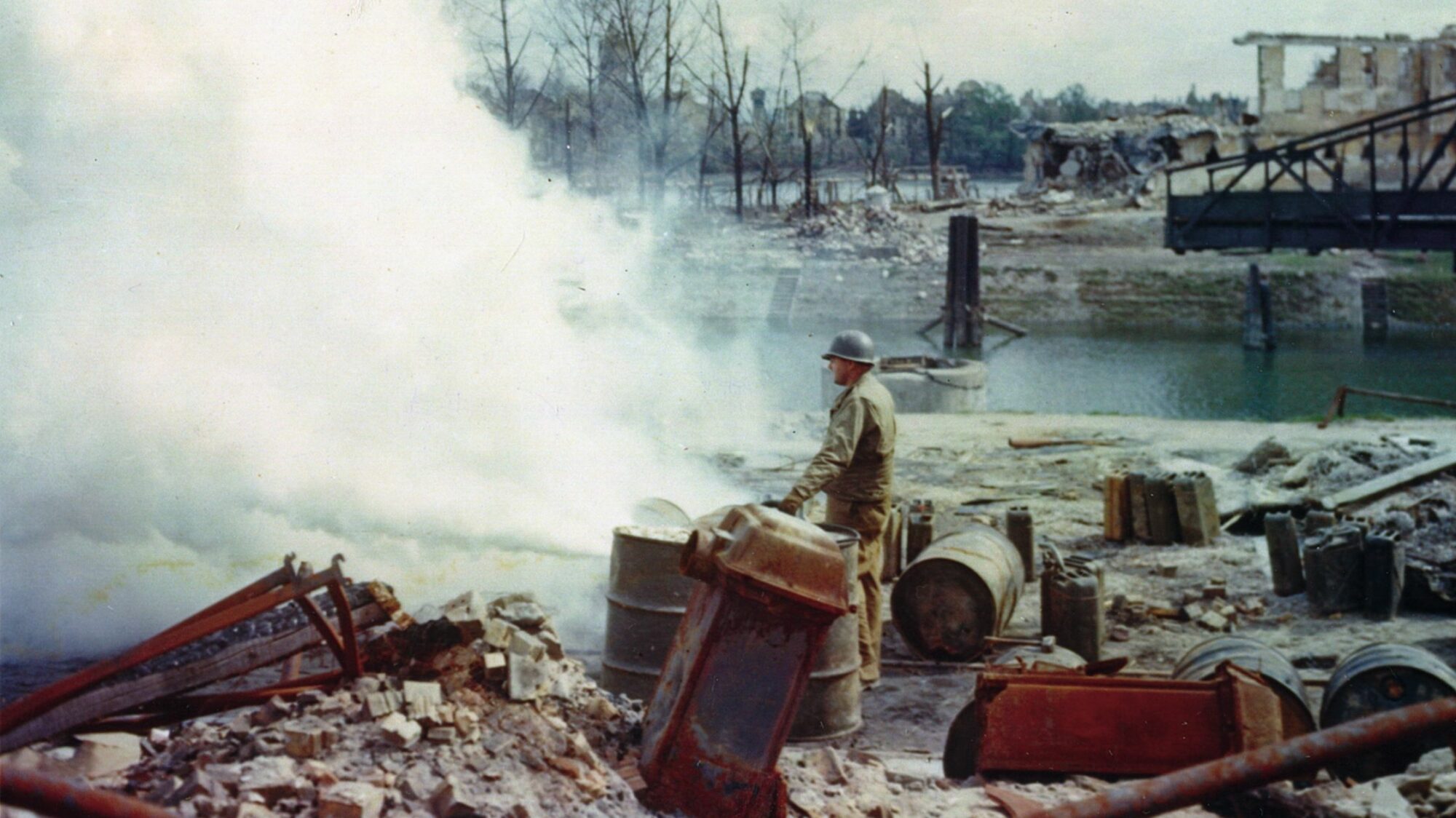
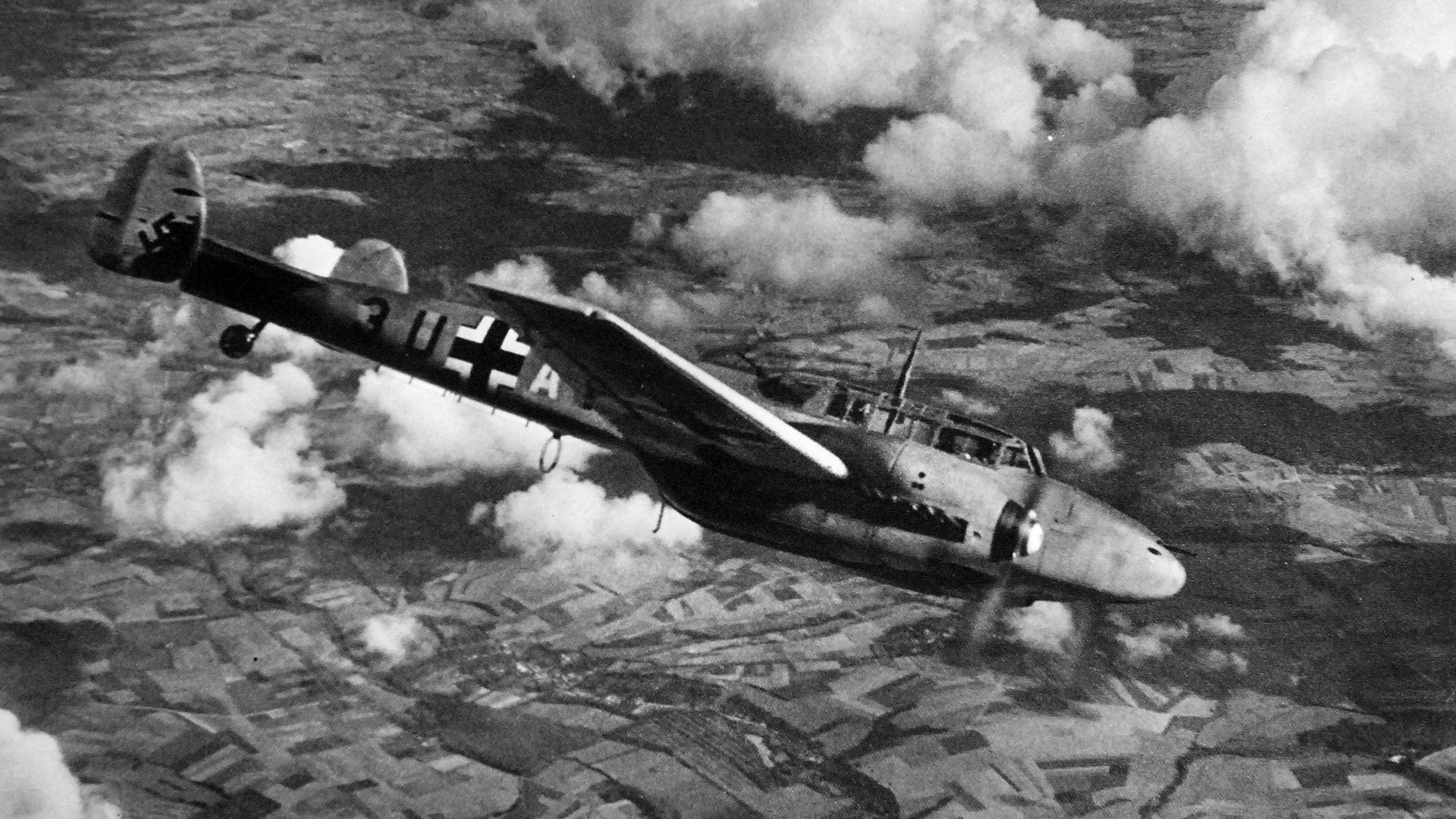
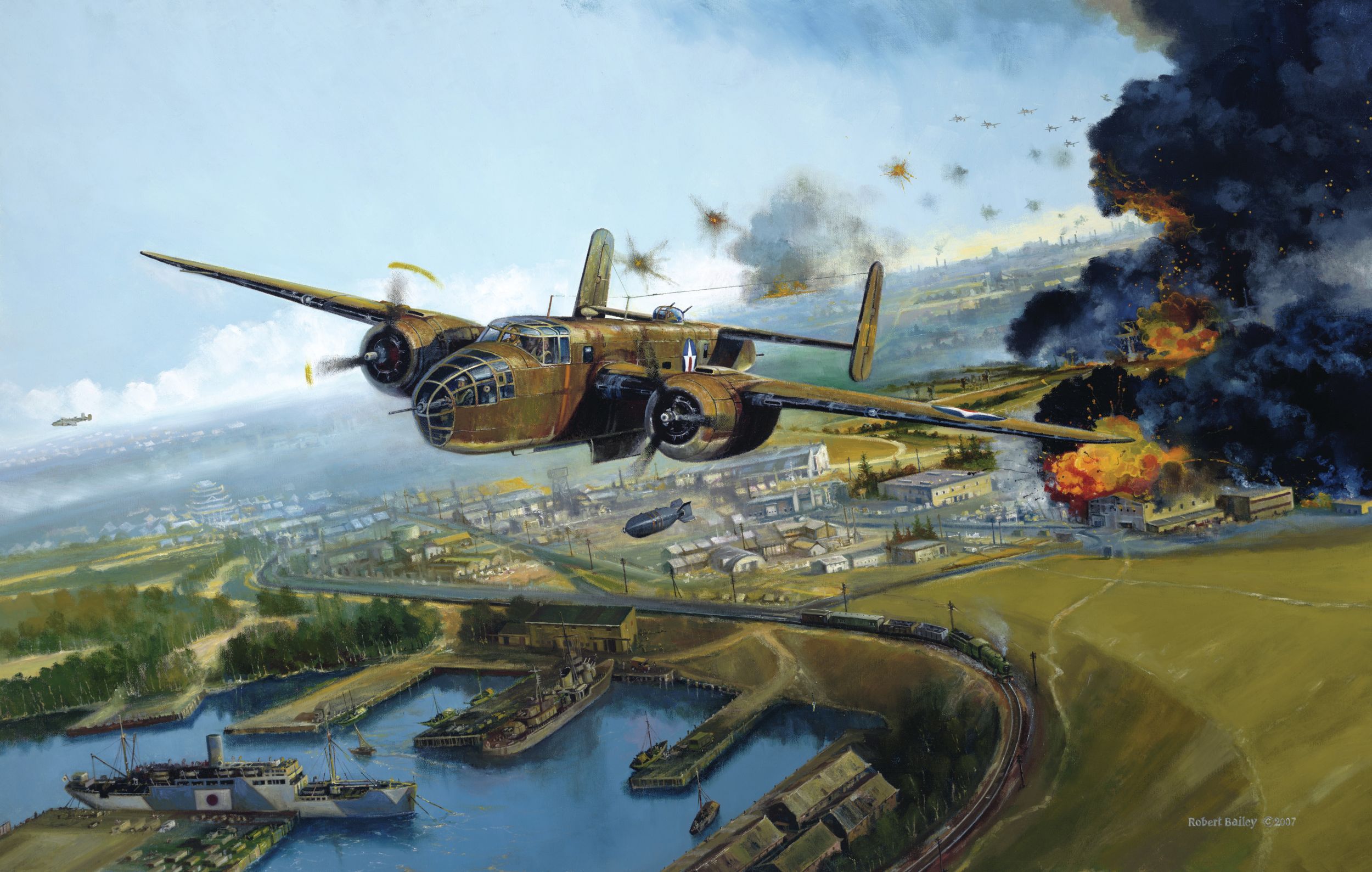
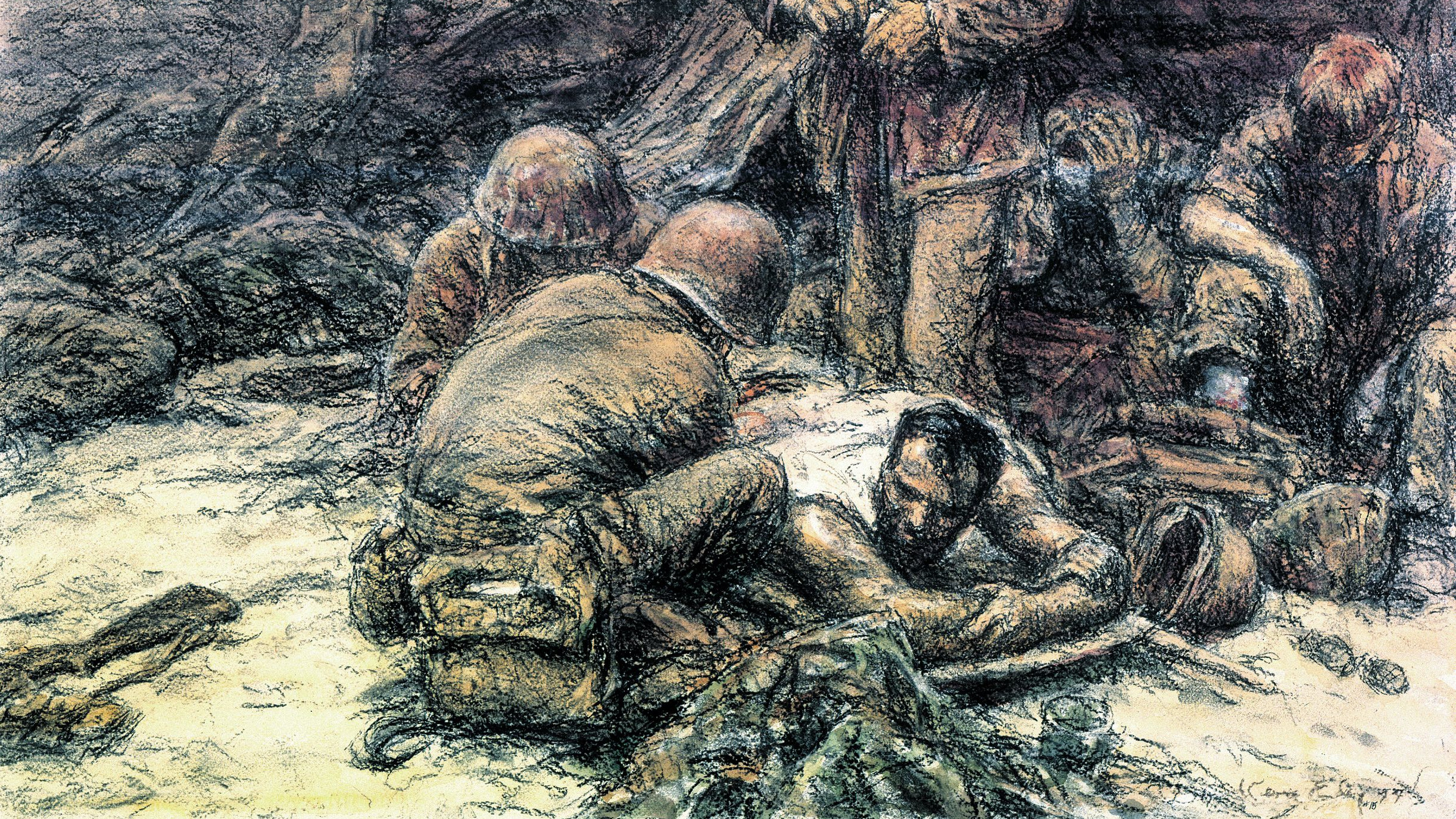
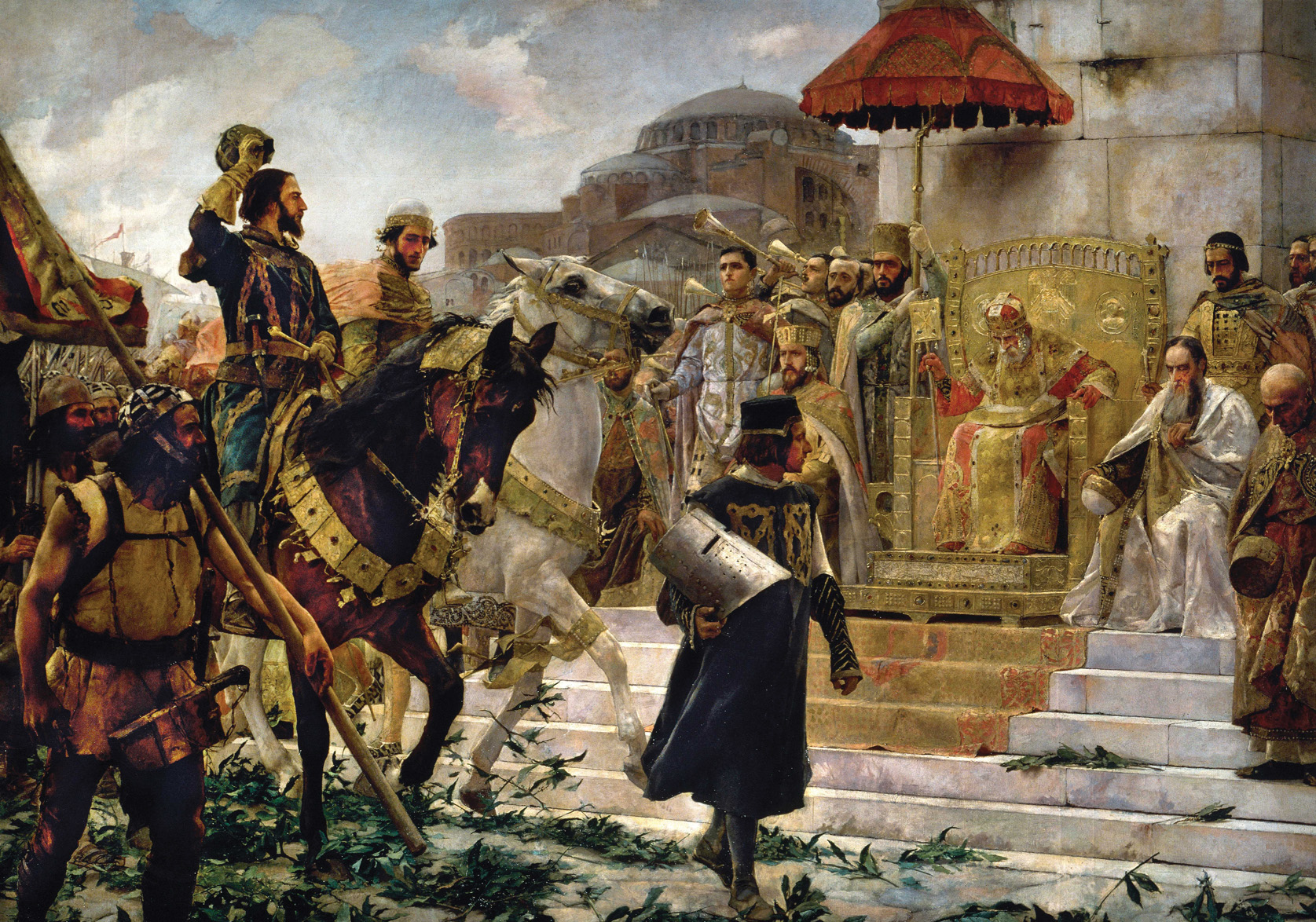
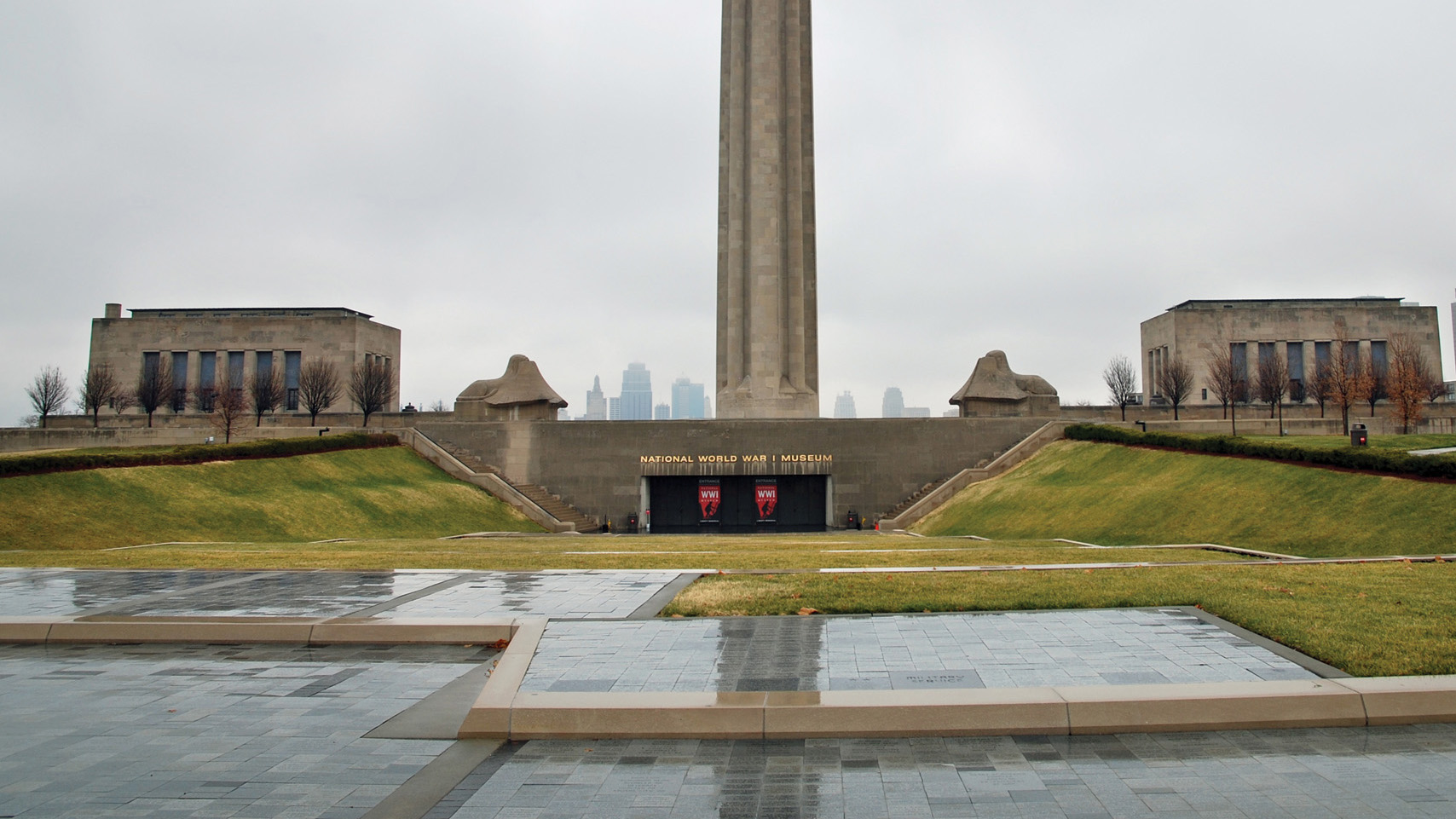
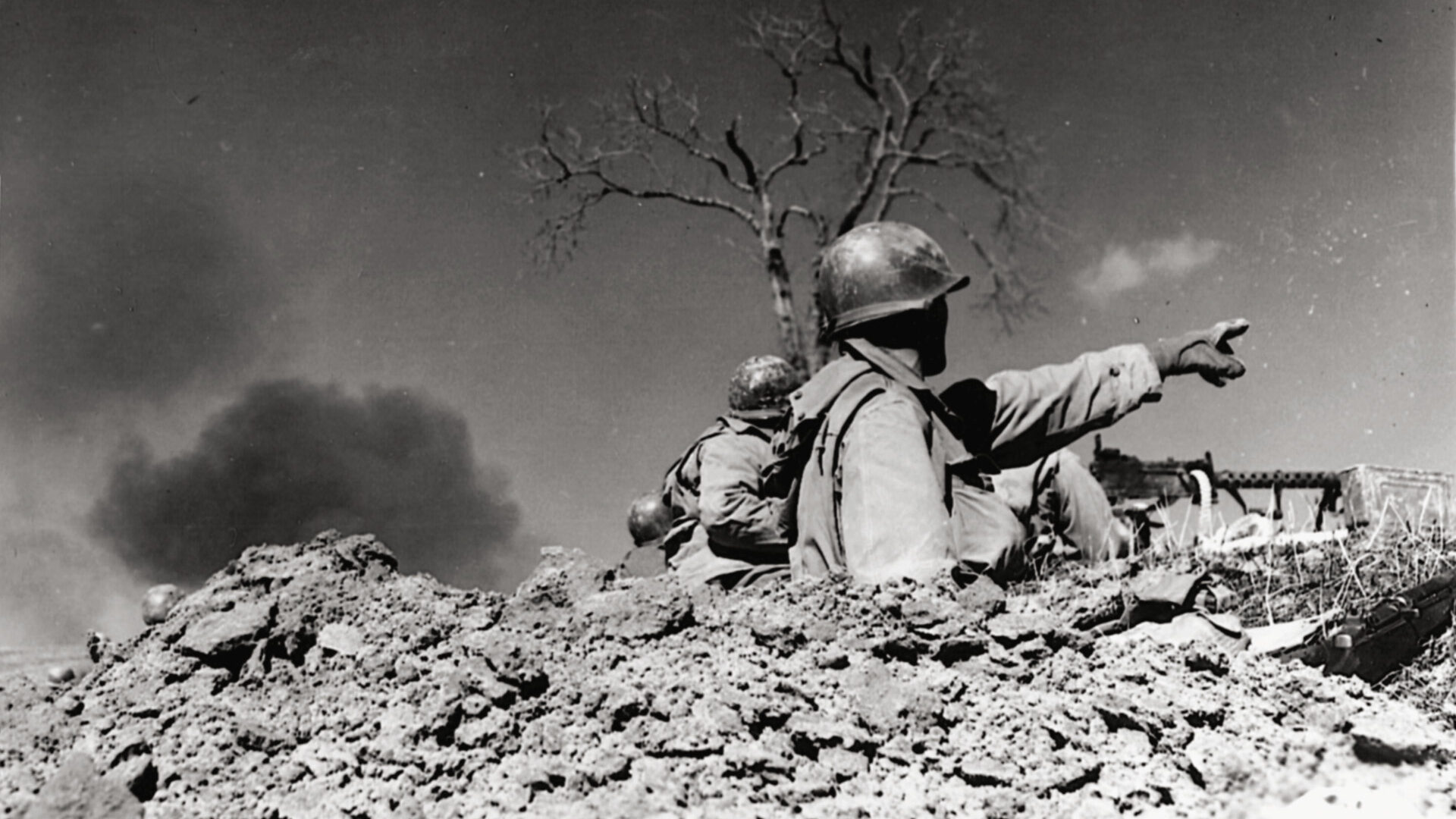
Join The Conversation
Comments
View All Comments